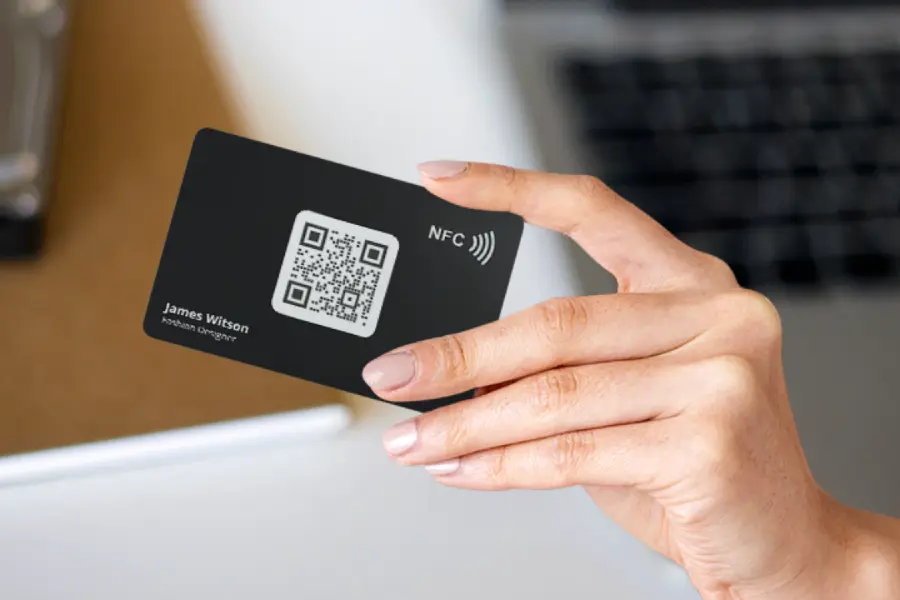QR Code vs. NFC: Which Contactless Technology is Right for You?
Published on

The Battle of the Tap vs. The Scan
In the world of contactless interactions, two technologies dominate: the QR code and NFC (Near Field Communication). You see QR codes everywhere, while NFC is the magic behind tap-to-pay systems like Apple Pay and Google Pay. But when it comes to your projects, which one should you use? The QR code vs. NFC debate isn't about which is universally better, but which is the right tool for the job based on cost, convenience, and user reach.
This guide will compare them head-to-head, so you can confidently choose the best technology for your marketing, business, or personal needs.
What is NFC?
NFC allows two devices—like a smartphone and a tag—to communicate when they are placed within a few centimeters of each other (a "tap"). An NFC tag is a small, passive chip that can be programmed with a URL, contact information, or other data. When a user taps their phone on the tag, it automatically reads the data and performs the action.
QR Code vs. NFC: The Key Differences
| Feature | QR Code | NFC Tag |
|---|---|---|
| Activation | Scan with camera app | Tap with NFC-enabled phone |
| Range | Several feet away | Very close (1-4 cm) |
| Cost | Extremely low (free to generate, cheap to print) | Higher (cost per physical tag) |
| User Device | Any smartphone with a camera (virtually all phones) | Must have NFC capabilities (most modern phones do, but not all) |
| Ease of Use | User must open camera app and frame the code. | Extremely easy; just tap (no app needed on modern phones). |
| Durability | Can be damaged if printed poorly. Relies on visibility. | Can be embedded in durable materials, hidden from view. |
| Data Capacity | High (up to 4,296 alphanumeric chars) | Low (typically just a URL or a few lines of text) |
When to Choose a QR Code
QR codes are your best bet for widespread, cost-effective campaigns.
- Mass Marketing: When you need to reach the largest possible audience, including those with older phones. (Flyers, posters, product packaging).
- Budget-Conscious Projects: When you need to deploy thousands of contact points for a very low cost.
- Linking to Rich Content: When you need to encode a lot of data directly, like a long URL or a Wi-Fi password with special characters.
- Situations Requiring Distance: When the code needs to be scanned from a distance, like on a billboard or a conference presentation slide.
When to Choose NFC
NFC excels in high-touch, premium, or seamless experiences.
- Premium Branding & Products: When you want a "wow" factor. The simple tap feels more magical and high-end than scanning. (High-end business cards, luxury product packaging).
- Speed and Convenience is Key: In environments where speed is critical, like contactless payments or quick access to a Wi-Fi network in a hotel room.
- Hidden Integration: When you want the technology to be invisible. NFC tags can be embedded inside a table, under a poster, or within a sticker.
- Interactive Kiosks & Smart Labels: For museums, exhibits, or retail displays where a simple tap can trigger an action without needing to aim a camera.
Conclusion: The Best of Both Worlds
In the QR code vs. NFC debate, there is no single winner. For maximum reach and minimal cost, the QR code is the undisputed champion. For seamless, high-end, and lightning-fast interactions where budget is less of a concern, NFC offers a superior user experience.
Often, the best strategy is to use both! A business card could feature a QR code for universal compatibility and a hidden NFC tag for a premium, tap-based experience.
Need a universally accessible, cost-effective solution? Start with a free, professional QR code from QRDesigner.com. It’s the perfect first step into the world of contactless engagement.
